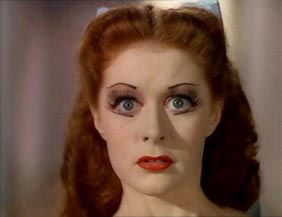|
|
Classic Movie Review: The Red ShoesBy Josh SpiegelJuly 19, 2010
She’s matched by two dynamic, different actors: Anton Walbrook (from the great Life and Death of Colonel Blimp and La Ronde) as Lermontov, and Marius Goring as Julian Craster. Walbrook is charming, charismatic, and icy in the same breath, always luring the audience in and simultaneously making them back off just a bit. There’s no doubt to why everyone is so drawn to Lermontov; who wouldn’t be? Goring is less assertive, but so is Craster. Craster is a gifted conductor, but he’s also able to distance himself from the art of ballet, enough to desire a life to live outside the theatre. Goring is, in some ways, an audience surrogate in the beginning, as we watch him breathlessly take to the theatre to watch a new ballet, but in a realistic enough way for those audience members not enamored with the art to be sucked in. What The Archers excelled at is creating worlds that are believable and livable, and worlds we don’t want to leave. When Michael Powell and Emeric Pressburger present us with a creative community of dancers, choreographers, conductors, producers, and so forth, it may not be as sumptuous as James Cameron’s Pandora, but what they lacked for in budgets, the Archers made up for in desirability. I want to dine with these people in their twilit restaurants. I want to watch them create works of beauty. I want to go to their parties, meet their friends, and learn about them. The Red Shoes belongs to that rare class of films, where the movie works on so many levels, whether analyzing the academic nature of the story or basking in the glow of the colors jumping out at you, that you are thrilled at what magic can be created on strips of film.
|

|
|
|

|
Sunday, May 5, 2024
© 2024 Box Office Prophets, a division of One Of Us, Inc.


